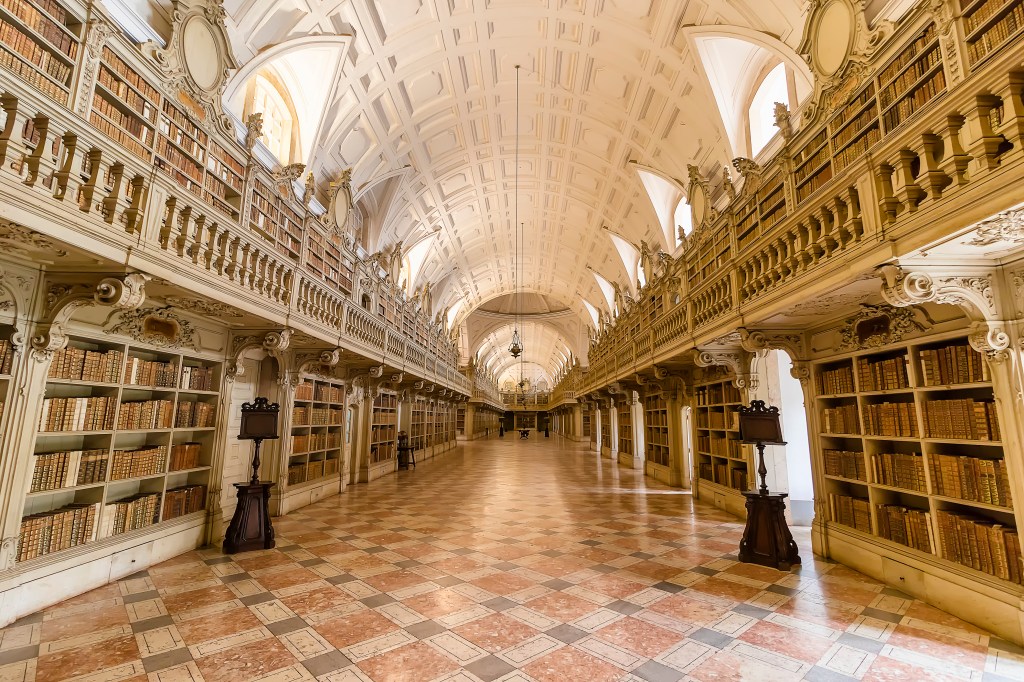This Library Inside a Portuguese Palace Uses Bats for Pest Control
Would you use this method?

Libraries contain multitudes. They house knowledge, inspiration, wisdom, and in some cases, bats. At least that’s the case of the library inside Portugal’s Mafra National Palace, a breathtaking monument filled with history and significance. And also bats. But these bats aren’t uninvited patrons; rather, they’re nightly guests of honor, invited to flit about the centuries-old stacks on a daily basis. Learn more about the history of the Mafra National Palace and the unique nature of its legendary library below.
The Mafra Palace Library

In the town of Mafra, on the west coast of Portugal, sits the Mafra National Palace, a UNESCO world heritage site and 430,000+ square-foot castle built in 1771 for King John V. It’s famous for many reasons: not only is it the nation’s largest monument, but it also holds a world-renowned organ and the world’s largest collection of historical carillons (large bells tuned to each other) — 98, to be exact. You may have seen the palace before without even realizing it, since it was used as the Lilliputian Great Chamber of War in the 1996 film adaptation of Gulliver’s Travels.
But perhaps the most fascinating part of the Mafra Palace is its Rococo-style library, which is 280 feet long with high ceilings, multicolored tiles, and wooden bookshelves. Those shelves hold over 36,000 leather-bound books that date back as far as the 14th century; some of them are “incunabula,” or books produced before the invention of the printing press.
Pest Control at The Mafra Palace Library
An old building full of old things made from natural materials like paper, wood, and leather is bound to draw attention from potential pests. This isn’t an issue specific to the Mafra Palace Library. If you’ve ever had a moth ruin your favorite sweater, you know that insects can cause serious damage. Some bugs, like beetles, silverfish, or termites, consume all parts of books — the paper, covers, and even the glue.
Atlas Obscura notes that some libraries use chemicals and even gamma radiation to keep insects at bay; however, pesticides can prove damaging to books and the people that use them, and may prove especially harmful to books as old as those at the Mafra Palace Library. So, how do they keep bugs out of their books? Bats, of course.
That’s right — bats. For centuries, custodians of the Mafra Palace Library have depended on these nocturnal knights-in-shining-armor to protect the collections by eating any book-eating bugs that inhabit the library. During the day, says Atlas Obscura, these bats sleep in boxes behind the bookcases or in the palace gardens, resting up for their nightly feast.
There is one bad thing about using bats as pesticides instead of chemicals. Bats are living things, and all living things… excrete, for lack of a more delicate term. These bats are indulging in daily bug banquets, and what goes in must come out. So before closing every evening, workers cover furniture, shelves, and floors with a tarp, and then spend a lot of time cleaning up anything that didn’t hit the tarps in the morning. Such are the consequences of going batty, it seems.
Urban Legends
You might be thinking, wait, the bat thing sounded like an urban legend. What else is going on here? Legend has it that at night, the Mafra Palace Library is home to an even more intimidating predator: rats. Allegedly, while bats search for bugs, giant rats prowl the grounds hoping to find people, dogs, or cats to eat. There’s another rumor that there are secret underground tunnels connecting the library to a former fishing village. While neither legend is verified, we’d much rather stumble across a tunnel than a people-eating rat.
The beautiful Mafra National Palace is open to tourists and is an important site in Portuguese history. Learn more about the palace and its library, and make plans for your own visit … during the day, preferably.
















